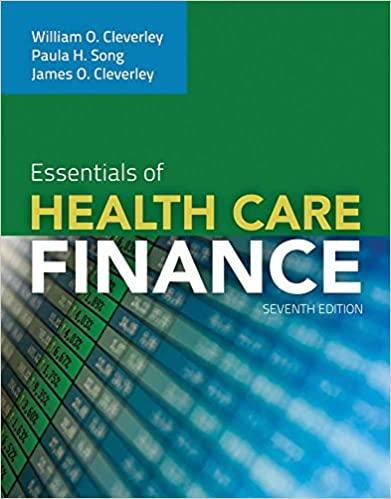Answered step by step
Verified Expert Solution
Question
1 Approved Answer
Stocks A and B have the following probability distributions of expected future returns: a . Calculate the expected rate of return, hat ( r )
Stocks A and B have the following probability distributions of expected future returns:
a Calculate the expected rate of return, hat for Stock B Do not round intermediate calculations, Round your answer to two decimal
places.
b Calculate the standard deviation of expected returns, for tock Do not round intermediate calculations, Round your answer to
two decimal places.
Now calculate the coefficient of variation for Stock B Do not round intermediate calculations. Round your answer to two decimal places.
Is it possible that most investors might regard Stock as being less risky than Stock
I. If Stock B is less highly correlated with the market than then it might have a higher beta than Stock and hence be more risky in a
portfolio sense.
II If Stock B is more highly correlated with the market than A then it might have a higher beta than Stock Ar and hence be less risky in a
portfolio sense.
III. If Stock B is more highly correlated with the market than then it might have a lower beta than Stock and hence be less risky in a
portfolio sense.
IV If Stock B is more highly correlated with the market than A then it might have the same beta as Stock A and hence be just as risky in a
portfolio sense.
V If Stock B is less highly correlated with the market than A then it might have a lower beta than Stock A and hence be less risky in a
portfolio sense.
c Assume the riskfree rate is What are the Sharpe ratios for Stocks A and B Do not round intermediate calculations. Round your answers to
four decimal places.
Stock :
Stock B:
Are these calculations consistent with the information obtained from the coefficient of variation calculations in Part
I. In a standalone risk sense is more risky than If Stock is less highly correlated with the market than then it might have a lower
beta than Stock A and hence be less risky in a portfolio sense.
II In a standalone risk sense is more risky than If Stock is less highly correlated with the market than then it might have a higher
beta than Stock A and hence be more risky in a portfolio sense.
III. In a standalone risk sense is less risky than If Stock B is more highly correlated with the market than A then it might have the
same beta as Stock A and hence be just as risky in a portfolio sense.
IV In a standalone risk sense A is less risky than B If Stock B is less highly correlated with the market than A then it might have a lower
beta than Stock A and hence be less risky in a portfolio sense.
V In a standalone risk sense is less risky than If Stock is less highly correlated with the market than then it might have a higher
beta than Stock A and hence be more risky in a portfolio sense.

Step by Step Solution
There are 3 Steps involved in it
Step: 1

Get Instant Access to Expert-Tailored Solutions
See step-by-step solutions with expert insights and AI powered tools for academic success
Step: 2

Step: 3

Ace Your Homework with AI
Get the answers you need in no time with our AI-driven, step-by-step assistance
Get Started


